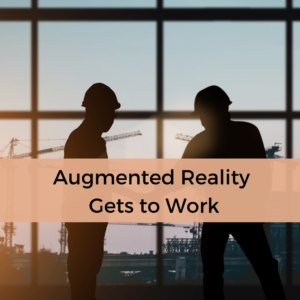Augmenting the Augmented Reality for Enterprises

Enterprises are now able to leverage AR technology due to: support of machine learning, advances in IoT sensors, deep neural networks rendered into eyewear, and specialised real-time video processing. Therefore, machine learning, cloud, and data can add further value to organisations and augment AR.
Industry examples listed in the article include:
- Guided assembly of complex components like airplane engines
- Oil rigs floating in the Arctic being remotely monitored from Houston using IoT sensor-enabled digital twins
- Off-floor monitoring of a continuous process manufacturing
- Following through on a new product from early design to final product launch, including detailed design, testing, and potential customer use all in AR
AR also enables digital twins. A greater amount of data is generated from sensors, giving a more immersive experience. The operational data gathered can be analysed or leveraged for other uses, such as arranging preventive maintenance. In field service, the data can offer insights into how users operate the product, allowing for better training.
Already, large enterprises are investing in IoT sensors and data analytics. The same strategy can be used to support enterprise AR, if the following technologies are integrated:
- APCs: put in places where digital twins will be, enabling data generation
- IoT edge capabilities: to gather data and allow for cloud services to be run to process data locally
- Cloud environment: to store data from sensors and physical twins.
- IoT hub capabilities: to act as a central hub for communication between physical twins and applications.
- Real-time processing capabilities: to process sensor data and feed it into AR applications.
- Mixed Reality software development toolkits: to build digital twins and other MR experiences.
Challenges of AR mentioned in the article include:
- Muscle strain and shoulder / spine discomfort
- No AR glasses alternatives for people with eye impairments
- Safety issues from prolonged use of contact lenses
In order to avoid these issues, enterprises should adhere to strict time limits for employees. Networks should also be audited to ensure they are secure and resilient.
The article concludes by stating that AR capabilities for digital twins allows for many opportunities for industries such as automotive, aerospace, energy, utilities, defense, and transportation. In particular, manufacturing is expected to change drastically for the better due to AR, with higher efficiency and reduced time.








